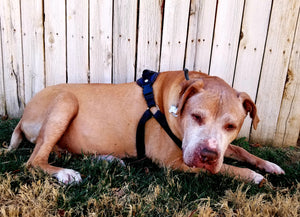Urinary Tract Infections in Dogs: Symptoms and Solutions
Urinary Tract Infections (UTIs) in dogs are fairly common. It’s important to know some of the common signs of a UTI in dogs to understand when it times to take them to the vet.

How Do Dogs Get UTIs?
Most often, a UTI is caused by bacteria moving up through the urethral opening into the bladder. Typically, the bladder is a sterile environment. When bacteria make their way into the bladder and begin to multiply, it leads to a UTI.
Female dogs or more likely to get UTIs than males, although male dogs do get them. Male dogs have a longer urethra than females, meaning bacteria takes a longer time to travel upwards.
UTIs also occur more often in dogs with chronic kidney disease and Cushing’s disease. These dog breeds have a higher risk of getting urinary tract stones, a similar infection: Shih Tzus, Bichon Frises, and Yorkshire Terriers.
Signs Your Dog has a UTI
Some dogs won't display any symptoms when they have a UTI, and your veterinarian may discover the infection while testing for something else. If your dog does display symptoms, these are some common ones to look out for:
- Bloody or cloudy urine
- Discomfort or whimpering during urination
- Licking around the urinary opening
- Frequent strained urination
- Accidents inside the home
- Fever
These could all be signs of a UTI. It’s important to note, however, that some of these symptoms may indicate a more serious problem. If you notice blood in your dog’s urine it could be a sign of kidney disease, cancer, or bladder stones. Make sure to take your dog to the vet right away if you notice any of these symptoms.
How Are UTIs in Dogs Treated?
When you take your dog to the vet with a suspected UTI, they will typically run a urinalysis using a urine sample from your dog. They can examine your dog’s urine for bacteria, crystals, and protein.
Once your vet has ruled out other health issues and diagnosed your dog with a UTI, they will often prescribe a seven to ten-day course of antibiotics to clear the infection. It’s important to have your dog finish the course of antibiotics to prevent reinfection.
There are a few steps you can take to decrease your dog’s risk of developing more UTIs in the future:
- Always supply clean, fresh water for your dog.
- Change water bowls when you see drool or food floating in the bowl.
- Let your dog outside as often as possible and avoid having them hold it for hours on end. A dog door like the Endura Flap Door Mount is a great option for letting your dog go whenever they need to.
- Try giving your dog a probiotic to encourage the growth of healthy bacteria.
If your dog is experiencing chronic UTIs, it could be a sign of a larger health concern. Make sure to check with your veterinarian about the next steps. Once they’ve been examined and administered the proper treatment, here are some ways you can comfort your dog when they’re in pain.




